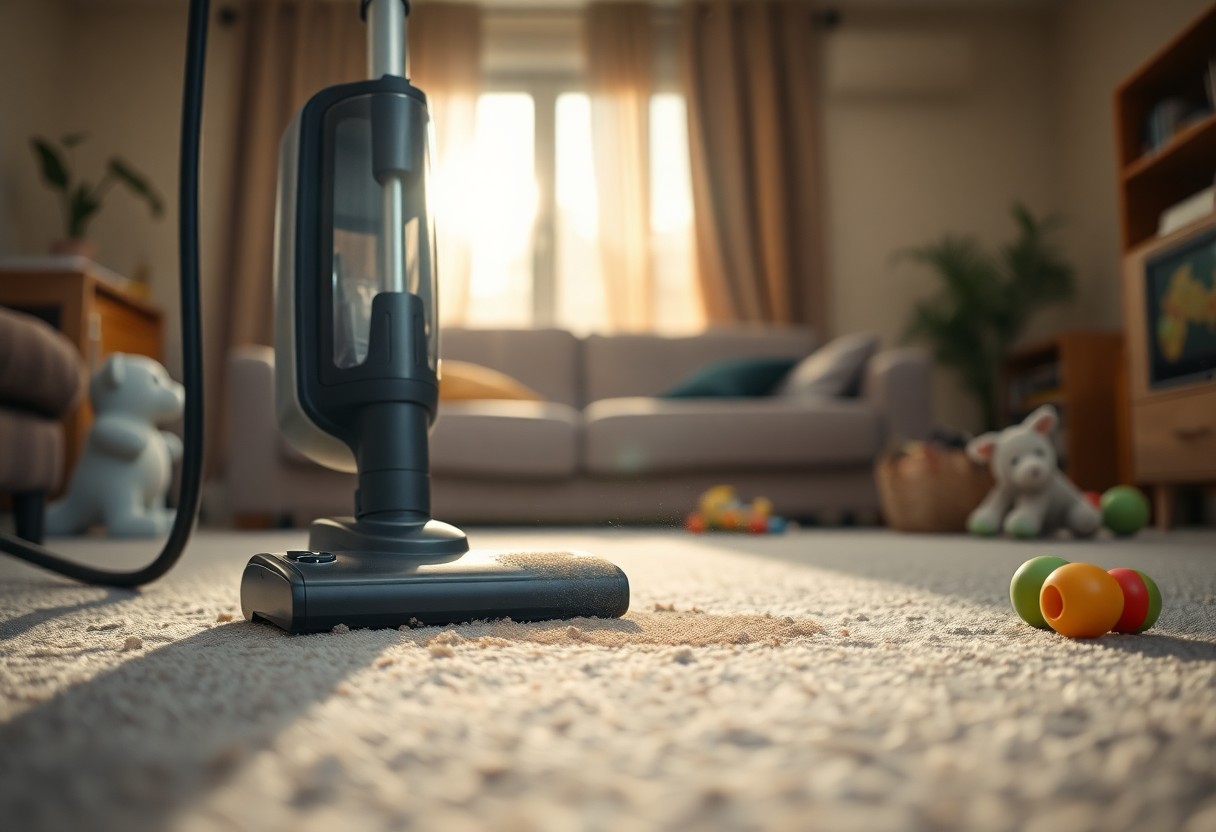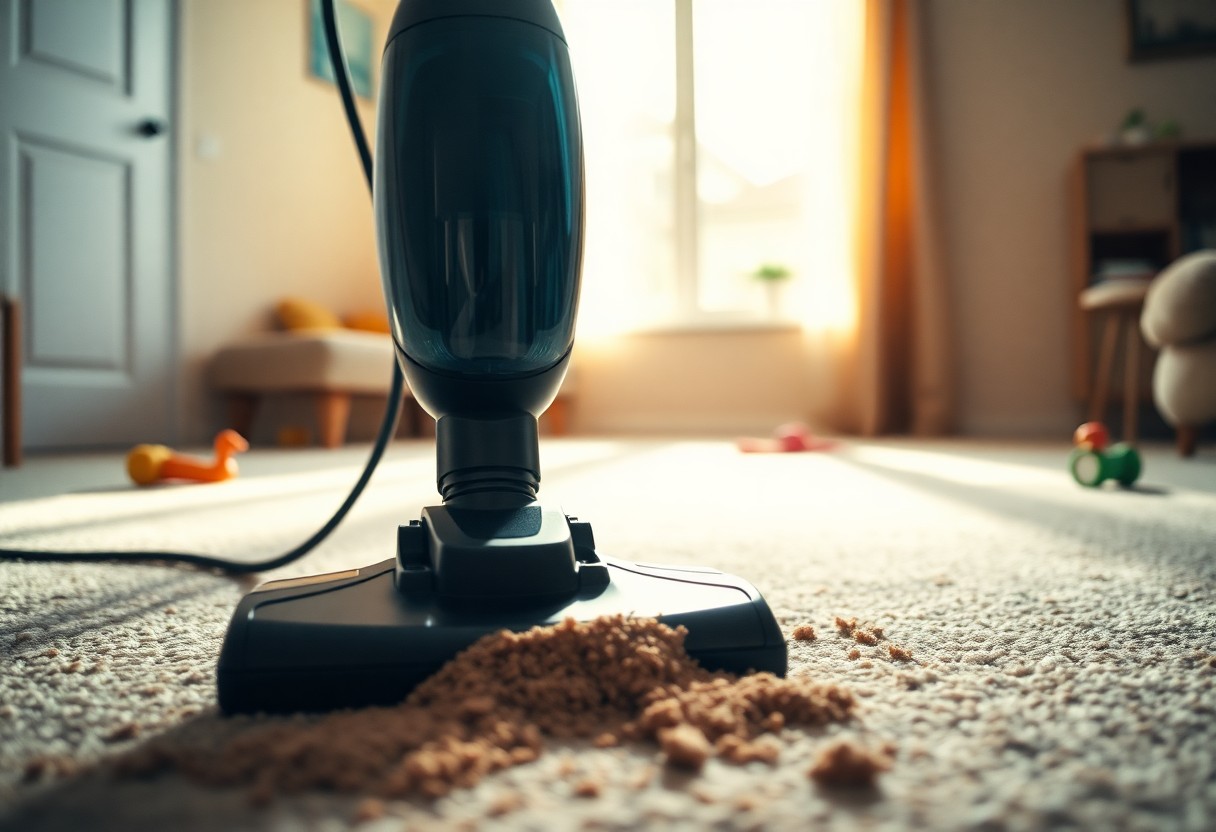How To Effectively Clean With Your New Vacuum Cleaner
Vacuuming is a powerful way to keep your home clean and free from allergens. With your new vacuum cleaner, you have the ability to tackle dirt and debris efficiently, but using it effectively requires some techniques. This guide will walk you through important tips and methods to enhance your cleaning routine, ensuring that every corner is addressed. You’ll also learn how to maintain your vacuum in top condition, maximizing its performance and lifespan. Get ready to transform your cleaning habits and enjoy the benefits of a fresher, healthier living space!
Contents
- Understanding Your Vacuum Cleaner
- Types of Vacuum Cleaners
- Key Features to Consider
- Preparation for Cleaning
- Clearing the Area
- Gathering Necessary Supplies
- How to Use Your Vacuum Cleaner Effectively
- Proper Technique for Different Surfaces
- Adjusting Settings for Optimal Performance
- Tips for Maintaining Your Vacuum Cleaner
- Regular Maintenance Practices
- Troubleshooting Common Issues
- Factors to Consider When Cleaning
- Type of Flooring
- Presence of Pets and Allergens
- Optimizing Cleaning Times
- Creating a Cleaning Schedule
- Efficient Cleaning Strategies
- Conclusion
Understanding Your Vacuum Cleaner
A fundamental step in using your new vacuum cleaner is to understand its components and functions. By familiarizing yourself with your device, you can maximize its capabilities and tailor its use to your cleaning needs. The right knowledge will streamline your cleaning process and improve efficiency, making chores easier.
Types of Vacuum Cleaners
An array of vacuum cleaners is available to suit various cleaning tasks. Here’s a breakdown of some common types:
| Upright | Ideal for carpets, these are powerful and easily maneuverable. |
| Cylinder | Great for versatile cleaning on multiple surfaces. |
| Handheld | Perfect for quick clean-ups and tight spaces. |
| Robotic | Automates cleaning, using sensors and programs. |
| Wet/Dry | Handles both liquid and solid debris efficiently. |
Knowing the different types will help you choose the right vacuum cleaner for your specific requirements.
Key Features to Consider
While exploring vacuum options, it’s vital to assess key features that can enhance your cleaning experience:
- Suction Power: A powerful motor ensures thorough dirt removal.
- Filtration System: Consider HEPA filters for allergen control.
- Attachments: Tools like crevice tools and brushes improve versatility.
- Capacity: A larger dustbin means fewer interruptions to empty.
- Weight: A lightweight model is easier to maneuver.
Perceiving these features will assist you in selecting a vacuum cleaner that best fits your lifestyle.
This information deepens your understanding of what to look for in vacuum cleaners…
- Noise Level: Quieter models reduce disturbance during cleaning.
- Cord Length: Longer cords provide greater reach without unplugging.
- Maintenance: Check ease of cleaning filters and brushes.
- Warranty: A solid warranty offers peace of mind.
- Energy Efficiency: Look for models that consume less power.
Perceiving these key attributes ensures that your investment leads to effective cleaning outcomes.
Preparation for Cleaning
Assuming you want to maximize your vacuum cleaner’s efficiency, preparation is key. Before venturing into the cleaning process, take a few moments to set the stage. This will ensure that your cleaning efforts yield the best results and make the task smoother and quicker.
Clearing the Area
You should begin by removing any obstacles from your cleaning space. Pick up loose items like toys, clothes, or furniture that may hinder your vacuuming. This will allow your vacuum cleaner to move freely and ensure that no areas are missed during the cleaning process.
Gathering Necessary Supplies
The next step involves collecting all the supplies you’ll need for an efficient cleaning session.
This includes not just your vacuum cleaner, but also attachments like brushes or crevice tools that are suitable for specific surfaces. Ensure you have access to a power source and any bags or filters necessary for your vacuum. Preparing these supplies beforehand will save you time and help avoid interruptions while you clean, allowing you to maintain a steady cleaning rhythm.

How to Use Your Vacuum Cleaner Effectively
Now that you have your new vacuum cleaner, using it properly can make a world of difference in achieving a clean home. Ensure you cover every corner of your space by moving furniture if necessary, and vacuum in a systematic manner, such as following a grid pattern. This will ensure that you don’t miss any spots. Additionally, empty the dust container or replace filters regularly to maintain optimum performance during each use.
Proper Technique for Different Surfaces
On carpets, you should use slow, consistent strokes to allow the vacuum to pick up embedded dirt effectively. For hardwood or tile floors, switch to a setting that prevents scratching, using quick passes to avoid pushing debris around. When dealing with area rugs, maintain a balance between suction power and airflow to prevent damage while still keeping the surface clean.
Adjusting Settings for Optimal Performance
Technique matters when it comes to adjusting your vacuum settings for the best results. Take the time to familiarize yourself with the different height adjustments and suction levels available on your vacuum. Use higher suction settings for deep carpets and lower settings for delicate surfaces to ensure you don’t harm them. The right adjustments can help you efficiently capture dirt and allergens while extending the life of your vacuum at the same time.
Plus, by understanding how to adjust your vacuum’s settings according to the surface you’re cleaning, you can enhance its effectiveness significantly. For instance, using the proper setting for carpets allows for a deeper clean, while using a lower suction for curtains or upholstery will prevent damage. Additionally, features like brush roll controls can help you to tackle pet hair or other stubborn debris more efficiently. By customizing your vacuum’s settings, you ensure that you are not just cleaning but optimizing the performance of your equipment, making the cleaning process easier and more thorough.
Tips for Maintaining Your Vacuum Cleaner
For optimal performance, consider implementing these effective maintenance strategies for your vacuum cleaner:
- Regularly check and clean the filters.
- Inspect and change the bags or empty the bin as needed.
- Clear any clogs in the hose and brush rolls.
- Keep the vacuum’s exterior clean for better longevity.
- Schedule periodic professional servicing for advanced care.
Recognizing these practices can significantly extend the life of your vacuum cleaner.
Regular Maintenance Practices
Tips for maintaining your vacuum cleaner include checking and changing the filters periodically, cleaning the brush roll, and ensuring that the vacuum is free from dust buildup. Make it a habit to inspect your vacuum before each use, ensuring that all parts are functioning correctly. This proactive approach will enhance performance and prevent potential issues.
Troubleshooting Common Issues
Some common problems you may encounter with your vacuum cleaner include loss of suction, unusual noises, and clogs. Start by checking the filter and ensuring it’s clean and properly installed. If your vacuum is still failing to operate efficiently, inspect the hose for blockages, as clogs can significantly impact performance. Make sure to also check the brush roll for tangles.
A thorough understanding of your vacuum’s components is vital for addressing issues effectively. If you notice loss of suction, inspect the filter; a dirty filter can restrict airflow. Unusual noises might indicate something stuck in the brush roll or a misaligned part—don’t ignore these sounds. Additionally, always make sure to unplug your vacuum before attempting any maintenance to avoid electrical hazards. Taking these steps can help maintain your vacuum’s performance and safety.

Factors to Consider When Cleaning
Once again, it’s important to evaluate different factors when utilizing your new vacuum cleaner to ensure optimal results. Consider the following:
- Type of flooring
- Presence of pets
- Allergens
- Size of your space
Assume that addressing these factors will lead to a more effective cleaning experience.
Type of Flooring
Any successful cleaning strategy involves understanding the type of flooring in your home. Different surfaces, such as carpet, hardwood, or tile, can impact how your vacuum performs. Be sure to adjust your settings and techniques to suit each material for the best results.
Presence of Pets and Allergens
There’s a significant difference in cleaning habits required if you have pets or are prone to allergies. Your vacuum may need specialized features to tackle both pet hair and allergens effectively.
For instance, vacuum cleaners designed for pet owners often include tangle-free brushes that can easily remove stubborn pet hair from carpets and furniture. Furthermore, utilizing a vacuum with a HEPA filter can trap fine particles, ensuring that allergens like dust mites and pollen are minimized in your home. Investing in these features can significantly improve your indoor air quality and provide a healthier living environment for you and your family.
Optimizing Cleaning Times
All effective cleaning requires strategy and planning. By optimizing your cleaning times, you can ensure that your new vacuum cleaner is used to its full potential, allowing you to maintain a pristine living environment with minimal effort. Evaluating your cleaning routine and adjusting it based on your lifestyle will help you save time and achieve better results.
Creating a Cleaning Schedule
You can maximize your vacuuming efficiency by creating a cleaning schedule that aligns with your daily routine. Break down tasks into manageable chunks, designating specific days for different areas of your home. This will prevent overwhelming feelings and help you stay consistent, ensuring that all spaces receive equal attention while accommodating your lifestyle.
Efficient Cleaning Strategies
Creating a plan for your cleaning sessions will transform the way you vacuum. Focus on high-traffic areas first to tackle embedded dirt. Work your way from room to room, using a systematic approach to conquer spaces. Don’t forget to adjust your vacuum settings according to floor types for optimal performance. Utilize attachments for hard-to-reach places, ensuring you don’t miss any corners or crevices.
Timesaving techniques are important when it comes to effective vacuuming. By investing in a vacuum with automatic settings or scheduled cleaning functions, you can simplify your routine. Always pick up toys and items from the floor before you start to avoid unnecessary interruptions, and run your vacuum in a consistent pattern rather than an uneven or haphazard manner. This leads to a deeper clean without having to repeat your efforts, increasing your overall productivity.
Conclusion
Drawing together the insights shared, effectively cleaning with your new vacuum cleaner requires understanding its features and adapting your technique. By familiarizing yourself with various attachments, regularly maintaining your vacuum, and following a systematic cleaning approach, you can enhance your home’s cleanliness and air quality. Tailoring your cleaning routine to suit your living space and specific needs will ensure that you maximize the performance of your vacuum, making the cleaning process more efficient and satisfying.